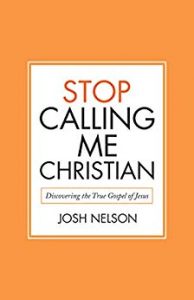The LPGA Tour’s Amy Olson, who holds the NCAA record for most Division I individual tournament victories, opened up for us in the 2019 Links Players Magazine–about her disappointing runner-up finish at last fall’s Evian Championship, about marriage and family, about loneliness on the Tour, and about her faith. The magazine is on the way to mailboxes this week. (Need one? Order here)
Olson and her husband Grant recently moved back to her home state of North Dakota, where he is a linebackers coach at North Dakota State, where he also played college football.
Apart from that article, however, we found some great interview outtakes from Amy, including the pleasure she takes in puzzle building and pickleball.
PUZZLES WITH MOM
One of the biggest things I like about puzzles is that growing up my mom and I did them together. So it was especially quality time between me and my mom. I feel like sometimes you have the best conversations when you’re not staring eye-to-eye, having that eye contact. I remember having the best conversations with my mom growing up doing puzzles together. I think that was kind of what got me into it, that spending time. And then I just love the details, looking at, OK, this color matches this, or this shape should fit in here. There’s a sense of accomplishment when everything gets organized and put into the right formation. So it’s a combination of things, but the main thing that got me into it was the relationships—my uncle did it all the time when he was home for Christmas—just the memories I would have around it. I loved that aspect.
So if you had a minute, you’d sit down and work on it?
If you had a minute, then it turned into an hour. But in the winter, there was always a puzzle going.
Was there a method to our assembly?
Start with the frame, then usually there’s a solid section, like a barn or house or an animal. Do that next, then slowly kind of work into the things that have less distinct differences. But always frame first.
Do you have a favorite scene for your puzzles?
Most of my favorites were landscapes or if there’s animals on them. That outdoors theme is kind of my favorite.
PICKLEBALL AND GRANT
We have a lot of things that we really enjoy doing. Pickleball, that’s been a lot of fun for us, we do that quite a bit, and tennis. We’ve been trying to find activities where we’re equal. You’ve got to think about a linebacker. He’s spent a lot of time working on footwork and moving around, moving back and forth, side to side. So he’s really good at anything that requires footwork. I’ve spent my entire life planted in one spot on the ground. But hand-eye coordination, that’s where I shine. So like ping pong, that’s my gift. So pickleball and tennis kind of combine the two, so it’s a pretty level playing field. We enjoy that. We’re pretty competitive.
Have you learned much from pickleball or tennis that you can transfer to your golf game?
In pickleball, you can’t really think about it. The ball’s coming at you fast and you have to react. I think that’s helped me approach golf a little bit like that, coming up to a shot and instinctively feeling what you’re going to do rather than when I tend to get too mechanical—OK, this is where my right elbow needs to be, you know, a list of things. You can’t play that way. So that approach in pickleball of, OK, ball coming at me, instinct, whatever shot you’re visualizing, instantly you have to react, trying to have that approach in golf, I’ve learned a little bit from pickleball.
Anything else?
Every once in a while when the ball goes high in pickleball, you need to slam it. It’s called a putaway. So you try to slam it at your opponent’s feet. It’s an opportunity to be really aggressive and win the point. Now when I have a birdie putt, I kind of think about it like a putaway in pickleball. It’s now or never, and being aggressive with it. I like how that transfers as well, because a lot of times in golf I can tend to get a little bit conservative, lag it up there, whatever it is, trying not to hit a bad shot instead of, This is what you need to do, so execute it.
